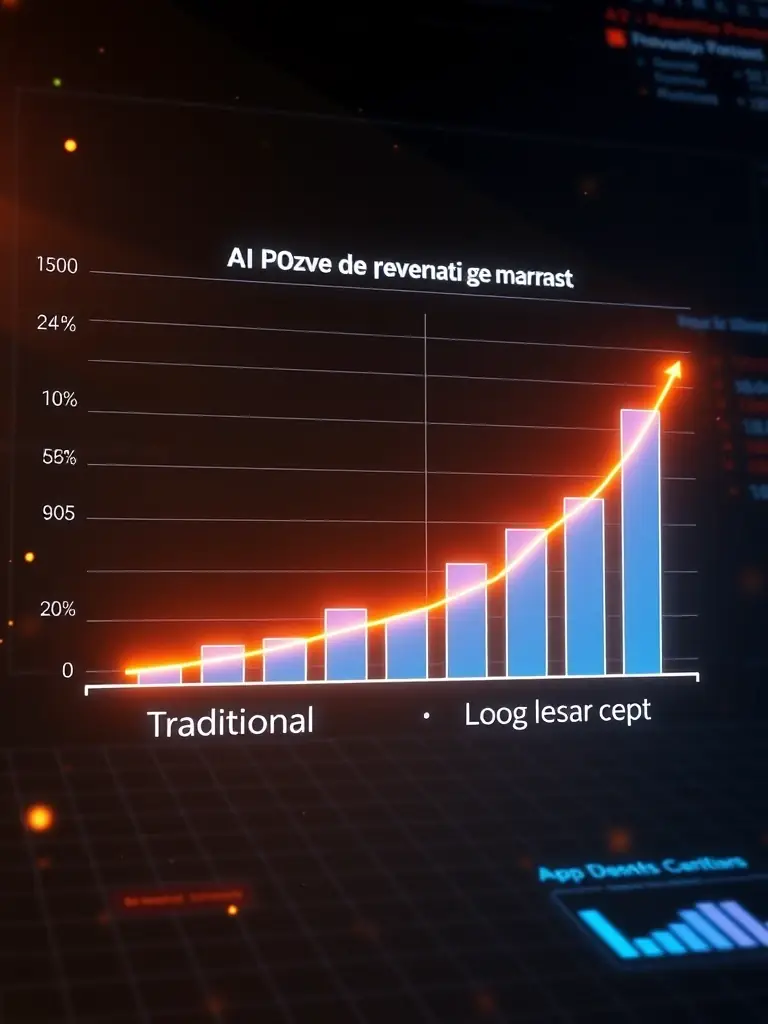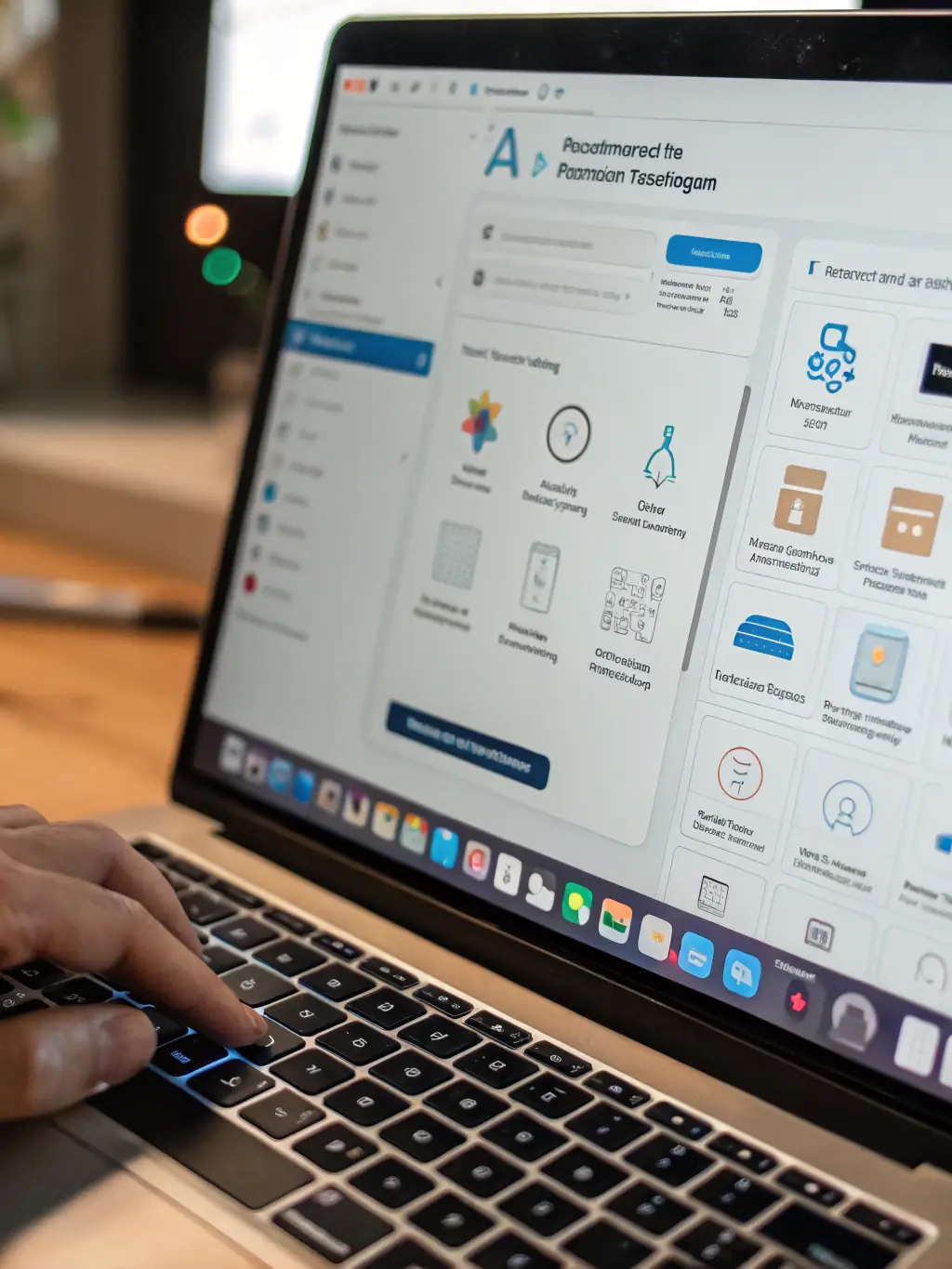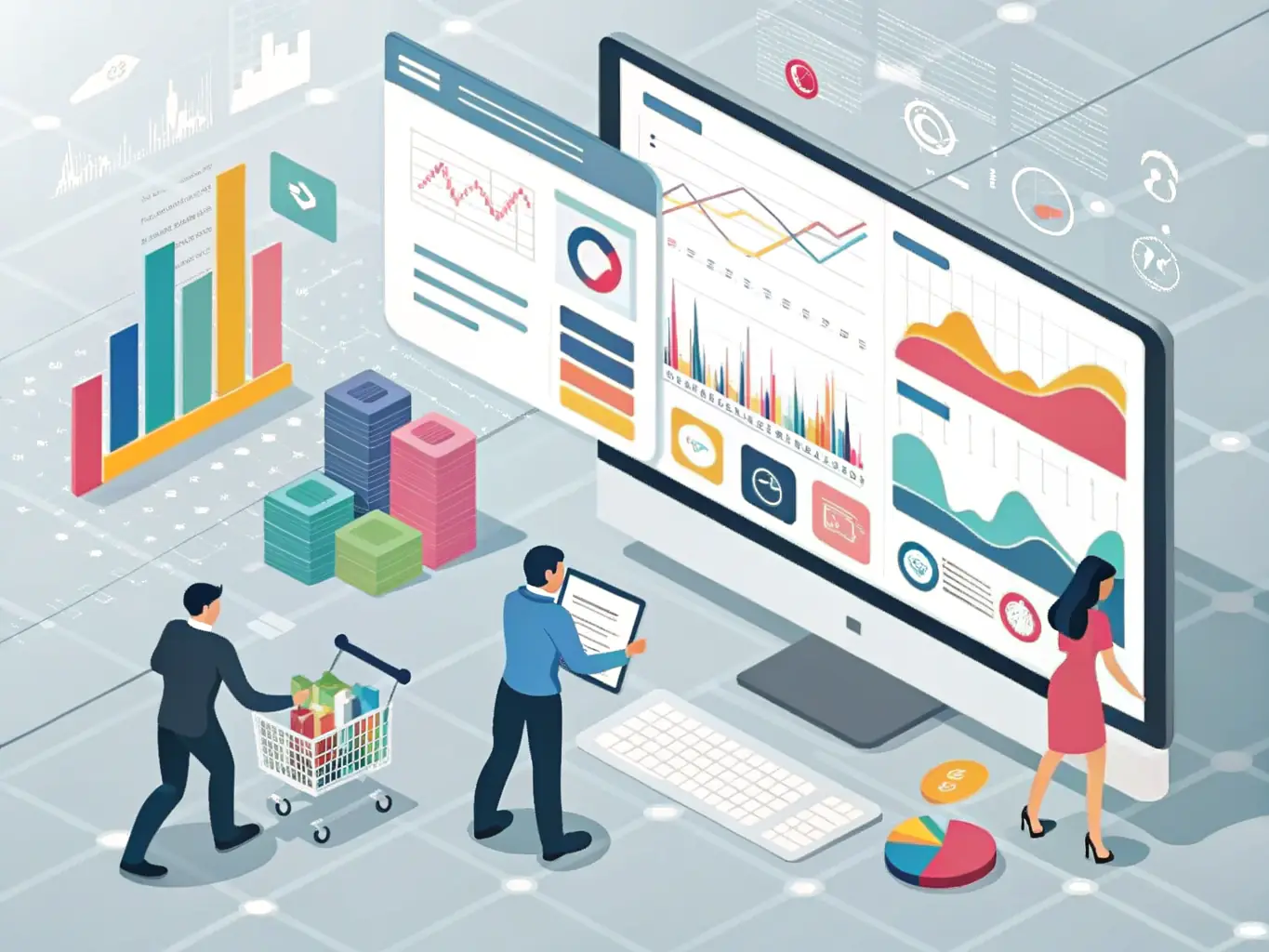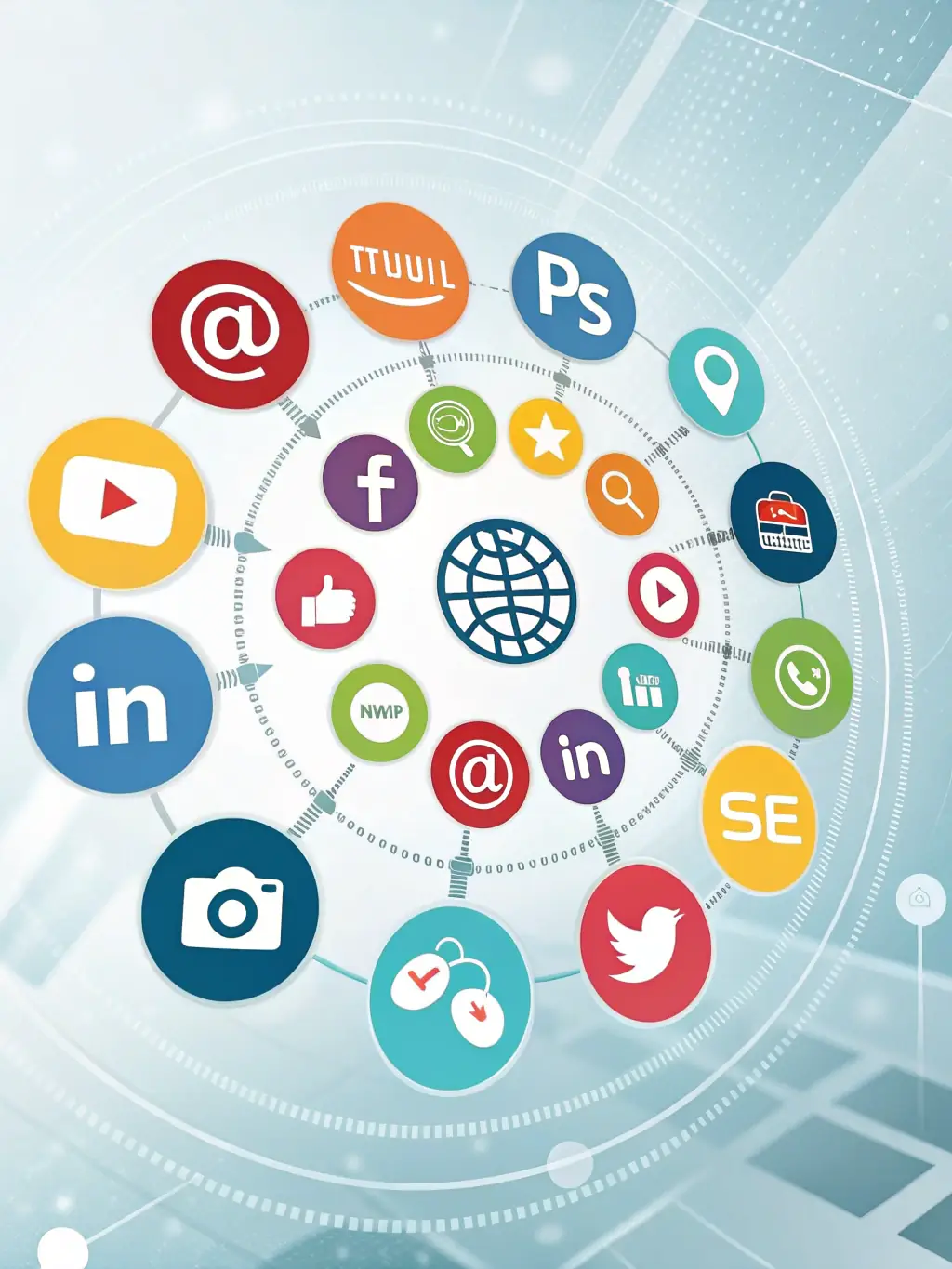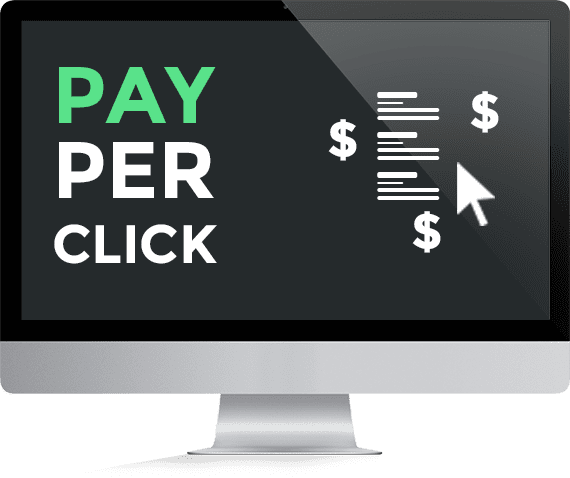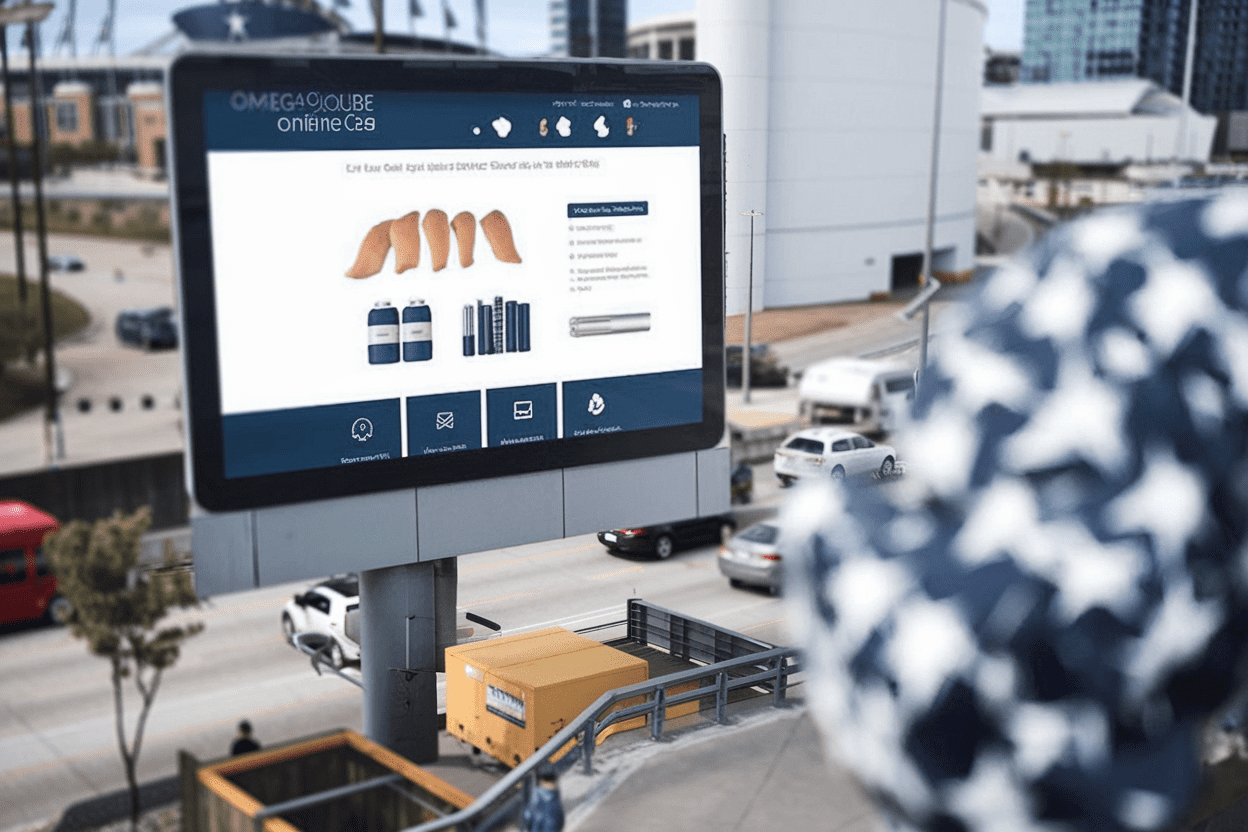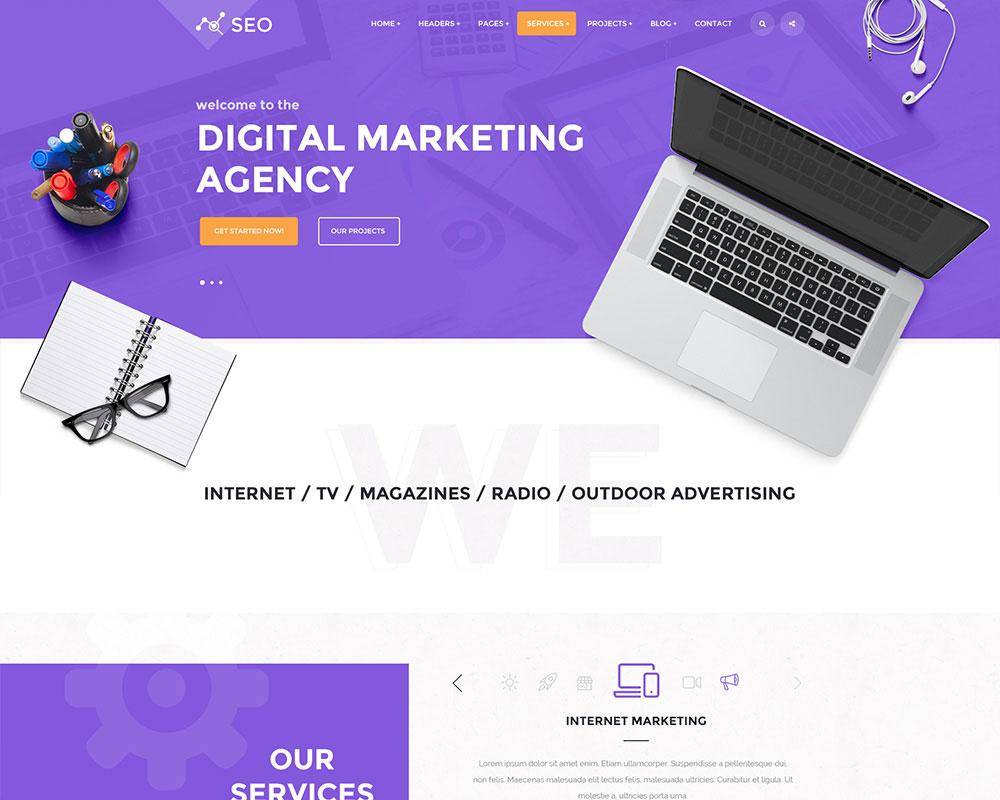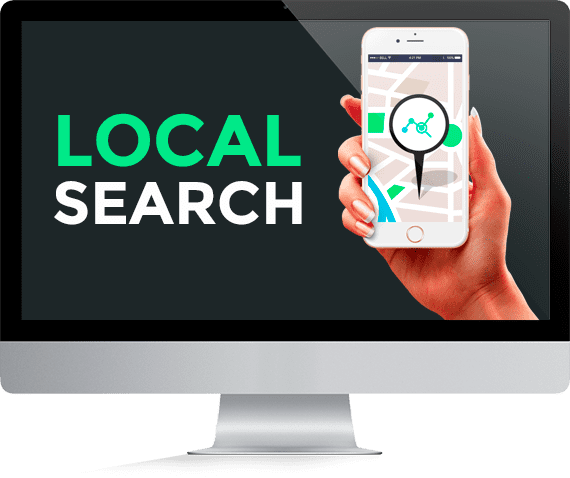Texarkana Digital Marketing Agency
Hey, have you heard about how AI can totally revolutionize your CRM marketing? It’s mind-blowing stuff!

With the rapid advancements in technology, AI has emerged as a game-changer in the realm of Customer Relationship Marketing (CRM). By harnessing vast amounts of data, AI can analyze customer behaviors and preferences in real-time, allowing businesses to tailor their marketing strategies with unprecedented precision. Imagine a world where personalized recommendations are not just occasional but seamlessly integrated into every customer interaction. AI-driven algorithms can predict what products or services a customer might need next, enhancing their experience and fostering loyalty. This shift from traditional marketing to AI-driven CRM signifies a fundamental change in how businesses engage with their customers. Rather than relying on broad demographic profiles, companies can now focus on individual preferences, creating a more meaningful dialogue that resonates with each unique customer.Moreover, AI’s capability to automate routine tasks frees up valuable time for marketers to strategize and innovate. Chatbots equipped with natural language processing can handle customer inquiries 24/7, providing instant support while gathering data on common questions and concerns. This not only improves response times but also enhances overall customer satisfaction.
Keep Track of Inbound Customer Calls
In addition to leveraging AI for personalized marketing, businesses can enhance their CRM strategies by diligently tracking inbound customer calls. Every call presents an opportunity to gain insights into customer needs and pain points. Utilizing advanced call tracking software allows organizations to record, analyze, and categorize these interactions effectively.By monitoring inbound calls, companies can identify trends in customer inquiries and feedback. This data not only aids in refining product offerings but also informs marketing campaigns tailored to address specific concerns or interests expressed by callers. Furthermore, integrating call tracking with AI analytics enables businesses to pinpoint which marketing channels drive the most valuable conversations.
In today’s busy market, good customer relationship management is very important if you want your business to do well. We offer a free meeting that gives you great tips on how you can make your CRM strategies better. You just need to send us a request, and we will look at what your company needs most and give you a plan that fits. With our skills in customer relationship management and crm solutions, we help you talk to your customers in ways that matter and keep them happy and loyal. A key thing our CRM solutions do is help you track calls that come in from customers.
Create Landing Pages and Funnel Data
This feature lets you see customer talks as they happen, so you can be sure that every question gets a reply. By keeping call data in order, your team can spot trends. They also fix problems faster. This helps make the customer feel better about your service by using our sales automation tools. You also get the power to develop landing pages that speak to your audience, which can help more people take action because the content is made just for them. When you mix this with our sales automation and funnel data analysis, you can make your marketing efforts simpler and keep a close eye on how well things are working.
By using the power of CRM, you can make communication better and build a strong base for lasting growth. Make the most of our wide industry knowledge to change the way you do customer engagement today!
Why is CRM Marketing an excellent option for small business owners?
**Why CRM Marketing is an Ideal Choice for Small Business Owners**
Effective marketing is key if you want your small business to survive and grow. Customer Relationship Marketing (CRM) is a strong tool you can use to build real connections with your customers. This can help you have long-lasting relationships with them. Good customer loyalty often comes out of these close relationships, and that can help your sales go up.
Reaching people in a smart way can also save money. A lot of old marketing ways cost a lot and sometimes do not get you the results you want. But, CRM marketing helps you target a certain group of people. This way, you spend less and get more out of your money. This can make your plan work better without going over the budget.
CRM Services: Location-based services

Types of CRM Technology and Deployment (Cloud-based, On-premises, Hybrid, Open Source, Mobile, Social CRM)
When you want to use Customer Relationship Management (CRM) technology, you will find several ways to set it up. Each one fits different business needs and IT systems. A cloud-based CRM or cloud crm lets you get to your customer data from anywhere with an internet connection. This is good for teams that work from home or in many places. On the other hand, an on-premises CRM gives you more power over your data security and IT setup. It works well for companies that must follow strict rules or have their own IT teams.
If you want both the ease of cloud crm and the control of working on-site, a hybrid crm solution might be right for you. You can grow these crm solutions like cloud systems but still keep important customer data on your own servers. Open-source crm can save you money and lets you change the software to match what your business needs, and you won’t have to pay big license fees.
Also, mobile crm apps let your sales or support teams get customer data anytime, anywhere through a mobile app. This makes it easy to answer customer questions right away. With social media use growing every year, social crm helps join crm tools with social media sites. This lets you build better customer relationships wherever your customers spend most of their time.
If you know about all these choices for customer relationship management, you will be ready to pick a CRM that helps your business reach its goals and boost customer engagement.
Who Should Use CRM/Who Needs CRM?
In today’s fast-changing business world, it is important to find the right people who need to use a customer relationship management system, also called a CRM system. Doing this helps a business get the most out of the CRM tools.
Who Needs a CRM? A CRM is important for any business that wants to focus on customer relationships and make these connections stronger. Small and medium businesses can use CRM tools to run their work better, see what their customers do, and also make their service better. A company with more and more customers, or one that wants to grow and handle more work in an easy way, will also get help from CRM because it lets you manage people’s details in one place and gives you useful data.
Sales teams, marketing teams, and customer support departments in many kinds of businesses can use a CRM system to enhance their customer support. A CRM will help them all work together, keep good contact, and follow each customer’s story the right way. In the end, if your business is about knowing and taking care of your customer relationships, you do not just want a CRM system — you really need it to do well and stay ahead of others.
You can read more about customer relationships .
Location-Based Targeting: When small businesses understand where their customers live and who they are, they can make their messages and deals fit those people better. With location-based CRM services, a business can send special offers and updates right when a customer is close by. This makes the message more helpful, and it can help bring more people into the store.
Personalized Marketing Campaigns: A CRM system helps small business owners break their audience into different groups. They can do this by looking at things like past buying habits, what people like, or how they act. This makes it easier to set up marketing campaigns that feel personal to each group. When you do this, people feel that the messages are meant for them, so they get more involved and want to stay with your business.
Definition and Explanation of CRM (What is CRM?)
**Definition and Explanation of Customer Relationship Management (CRM)**
Customer relationship management is how businesses keep track of their relationships with customers. It also helps them connect with new and potential customers. Companies use different ways, tools, and technology to look at and understand how they talk to customers during every stage of the customer lifecycle. The main goal of customer relationship management is to improve customer satisfaction. It also helps keep customers for a long time and build better business relationships.
CRM systems bring all customer information together. This way, all departments can get to it when they need. This helps teams talk better with each other and make smarter choices. By using data like customer feedback, buying history, and how customers interact, including phone calls, businesses can make their services and marketing fit what each customer wants. Because of this, a CRM strategy not only makes things run smoother, but also helps give a more personal feel, so customers feel noticed and understood. With customers’ needs always changing now, having a strong CRM strategy with easy access to customer information is key for growth and for the long run.
Key Features and Components of CRM
When you look at the key parts of a Customer Relationship Management (CRM) system, it’s important to see how all these work together. They help to make every customer moment better and make business tasks, like project management, easy. A CRM system brings all customer information from different places into one safe place. This gives you a clear picture of each person.
Automation tools help teams by doing tasks like email follow-ups and reporting on their own, including repetitive tasks. This lets people in your business focus on bigger tasks that need more care. A big piece of any CRM system is its analytics and reports. With these, you get to see customer behavior, which email marketing efforts work, and new trends in the market. It helps you make good choices about your work and where you go next.
Connecting with other software, like email marketing tools and online stores, lets all your data work together smoothly. You do not have to keep fixing or moving things by hand. A CRM system can also be set up to match the way your business works. It fits your needs, so your work with projects and customers is always on track.
When you use all these features, like project management, a crm system helps you learn more about your customers. It lets you build better relationships, keep people loyal, and help your business grow year after year.
CRM in Different Business Contexts (Sales, Marketing, Customer Service)
A good understanding of how Customer Relationship Management (CRM) works in different business areas can help companies get the most out of it. In sales, CRM is a key tool for sales reps. This tool helps sales reps track leads, manage pipelines, and look back at customer interactions. With this, sales teams can increase the number of sales and guess future sales more correctly.
In marketing, Customer Relationship Management lets businesses build personal campaigns. These campaigns fit what customers like and how they act. This way, the business can reach the right group of people. By using past data, the marketing team can change their plans, get more people to engage, and make more sales.
When it comes to customer service, CRM gives service representatives a full picture of a customer’s past. This helps service representatives answer questions fast and give the right help. The service also gets better, and stronger trust grows between people and the company.
To sum up, when people see how useful CRM can be in sales, marketing, and customer service, they can use one plan for everyone to get better customer engagement and help their business keep growing.
Benefits of CRM for Businesses (Including Business Growth, Collaboration, Profitability, etc.)
Implementing customer relationship management (CRM) systems gives businesses many benefits, including improved customer retention. The benefits of CRM can help companies grow, work better together, and make more money. A good CRM lets a business build a strong connection with its customers. This is done by talking to customers in a way that suits them and by doing follow-ups at the right time. By knowing what customer needs are and giving them what they want quickly, companies keep their customers happy. Happy customers often come back and even tell others about the business.
CRM also makes it easy for teams to share information about customers. A CRM puts all customer data in one place so that sales, marketing, and customer service can all see the same things. This way, everyone in the company works together well. Better teamwork means better service for customers.
Using customer relationship management helps companies save time by handling simple tasks for them. A CRM system also gives lots of useful information, which helps people make better choices. Companies can use a CRM to make their sales process better and deliver better customer experiences, find chances to sell more, and keep an eye on how well they are doing. This can lower costs for the business and help bring in more money.
In short, using customer relationship management in a smart way can change how a company works. It helps keep them ahead in business so they do well year after year.
CRM Features vs. Marketing Automation
When you look at customer relationship management (CRM) features and marketing automation, you need to know that these tools work well together but do different jobs. CRM features are there to help you manage how you talk to your customers. They let you keep track of sales and hold on to customer data that helps you build strong relationships over time.
On the other hand, marketing automation lets you save time by doing many marketing jobs for you. This includes sending emails, setting up posts on social media, and checking what users do online. If you bring CRM features and marketing automation together, you can handle leads better and use your customer information in the best way.
With customer relationship management, you get a clear look at what your customers like and what they have bought before. This helps you make marketing campaigns that feel right to your target group. Marketing automation lets you react to your current customers’ actions right away, which means you can talk to them at just the right time and make it more likely for them to buy.
When you use both CRM and marketing automation, you offer your customers an easy and smooth experience. At the same time, you get the power to make smart choices using real customer data. This is good for anyone who wants their business to grow, connect with customers, and get better results from the work they do.
CRM and AI (How AI is Impacting CRM)
As technology moves forward, the use of artificial intelligence (AI) in customer relationship management (CRM) is changing how businesses and customers connect. AI-driven CRM tools help with customer engagement. They do this by looking at a lot of data to give helpful insights, leveraging artificial intelligence technologies. This means companies can now better understand what customers need and want. They can be ready to meet these needs in a way that was not possible before.
For example, AI can study how people act when they shop or ask for customer support. It helps the team choose the right marketing plans based on each person’s journey with the business. Also, AI-powered chatbots can give quick answers to customer questions at any time. This means companies can help customers faster and let human agents work on bigger, more complex issues.
Bringing CRM tools and artificial intelligence together is great for working better and faster. It also helps build stronger customer relationships. People feel heard and cared for, so customer engagement and loyalty go up. Today, when customers want things to feel personal, using AI in your crm strategy is not just nice to have. It is needed if you want to stay ahead and meet what today’s buyers expect from their customer relationship management.
Real-world Case Studies of CRM Failures and What Businesses Can Learn
Looking at real-life examples of CRM failures shows how businesses can learn to make their customer engagement better. For example, one large telecommunications company put in a crm system, but did not give its staff enough training. Because of this, people did not use the system much. The company missed chances to upsell and did not give good customer support. This shows the need to pick the right crm tools and to spend time and effort on full employee training, as well as planning for smooth integration.
There was also a well-known retail business that had big problems with data. The issues came from poor data management in its crm system and caused wrong customer insights. This hurt their marketing and made people lose trust. Other businesses can take away the lesson that they must keep data correct and have a simple, clean process to bring all their data together.
In the end, these stories make it clear that technology by itself will not bring success. A full plan which includes strong training, proper data management, and a real commitment to getting the most from crm tools is key. This is how companies can really help their customer support and get better customer engagement.
Step-by-Step Guide for CRM Adoption for Solopreneurs and Microbusinesses
Adopting the right CRM software does not have to feel hard for solopreneurs and microbusinesses. With a step-by-step plan, it can be simple and help your business a lot. To start, make sure you know what the goals for your business are. Think about the main problems you want the crm software to solve. Figure out which features you need, such as contact management, lead tracking, or automation tools.
Then, look into different CRM platform options. See which one works well with your budget and matches what you need. Use trial versions so you can try out the crm platform before buying. When you pick one, set time aside to get it up and running. This means bringing in your old contacts, making fields that fit the way you work, and setting up things to run automatically.
Be sure that you and anyone on your team know how to use every part of the new software. A little training can help you use it much better. Everyone needs to get what the crm software can do for customer interactions and how it can help grow the business. Keep checking how you use it and make changes as your business grows. This way, your crm software will keep meeting your business goals.
Integrating CRM with Other Business Tools (Email, E-commerce, Social Media)
Integrating customer relationship management with other business tools like email, e-commerce platforms, and social media helps give a smooth customer experience. When you connect a crm system with these types of everyday tools, you can manage your data better and make it easier to talk with your customers. It also helps you build stronger customer relationships.
For example, joining email marketing with customer relationship management lets you track every customer move. This means you can send more personalized and targeted marketing campaigns. If your crm system is connected to your e-commerce platform, you can see what people buy in real-time. This makes it simple to send special offers and suggestions most of them will like.
When you bring in social media, your team can see all the ways your customers reach out or talk about you. You can always give a quick answer or join in on conversations to raise customer engagement.
This way of working not only helps you work faster and better. It also gives your business the right information to make decisions based on what your customer needs. It lets you shape every part of your service around your customers and what works best for them.
CRM Usability Upgrades and Customization Tips from Actual Users
When it comes to upgrading a customer relationship management system, user experience is very important. People say it matters a lot to have an easy-to-use design that helps them move around the system easily. They do not want things to feel too tough.
Good customization often means setting up dashboards so you see the most important numbers for your job. This way, every team can see the data that matters the most to them. Also, when the system makers listen to what users say about features, the customer relationship management platform can get much better.
For example, sales teams can get more done if they have tools that help with their daily tasks. A better customer support module that is built using what real users want can boost customer satisfaction too.
Training that helps people really learn how to use the CRM can help your team feel at home with the system. With practice, everyone will use its main features in their work, and the system will become a helpful and needed part of their day.
Deep Dive: Prospect Relationship Management (PRM) versus CRM—When and Why to Use Each
When you manage client relationships, you need to know the difference between Prospect Relationship Management (PRM) and Customer Relationship Management (CRM). PRM helps you in the first steps of the customer journey. With PRM, a business can talk to potential customers. It helps you grow those early connections and lead people to become real, paying customers.
On the other hand, CRM starts to work after you get a new customer. With CRM, the main goal is to keep up good relationships with your buyers. It gives you the tools to talk with them in a personal way and give good support. Over time, this makes people trust you, stay loyal, and feel good about choosing you.
Picking the right system depends on what your company needs at this time. If you are working hard on lead generation and bringing in new people, then PRM is the choice that can help you the most. If your team wants to make your relationships with current customers better and get the most value from their full time with you, CRM is what you need.
Knowing the difference between PRM and CRM helps you use the right tools for each part of the customer lifecycle. This way, your business can grow, keep people happy, and do even better in the future.
Innovative Ways to Use CRM Data for Customer Engagement Across Channels
Customer relationship management (CRM) systems have changed how brands talk to customers and potential customers. By using the data from different interactions, businesses can come up with new ways to make their messages feel personal on different channels. For example, advanced analytics can help brands know what existing customers and potential customers like and how they act. This makes it easier to run marketing campaigns that feel more personal and work better. Also, when you put CRM data with social media, you get real-time talk and quick answers to customer needs and feedback. This way of using many channels helps brands build deeper connections, grow customer loyalty, and keep customers happy. Over time, this can help your business keep growing.
Affordable CRM Alternatives and Free Tools for Small US Businesses
Getting started with customer relationship management (CRM) can feel tough. This is true, especially for a small business that does not have a lot of money to spend. But, there are many budget-friendly CRM choices out there. Some are even free. These tools are made for the needs of small businesses in the US. By trying these options, a company can make the most of every interaction with a customer without spending a lot of money.
Platforms like HubSpot CRM give a lot of features you can use at no cost, such as contact management, email tracking, and reports that help improve your sales productivity and work better. Also, tools like Zoho CRM and Agile CRM let you start at a lower price. Their costs can grow as your business grows.
So, it does not matter if you pick a free version or pay a small subscription fee. The right CRM can help your business build strong customer relationships and better manage your sales work. With these kinds of CRM, a small business owner can focus on what is important. You can offer good service and help your business grow.
Use AI-powered chatbots to help with everyday customer questions. The chatbots can give answers that feel personal by using what they know about a customer’s history and likes. This helps to make every interaction feel special for the customer.
Predictive Lead Scoring: Train AI systems to look at old sales data. These tools find patterns that show which leads are likely to be more valuable. This way, sales teams can know where to put their energy and focus on leads that are more likely to become customers.
3. Sentiment Analysis: Use AI tools to look at customer feedback, reviews, and posts on social media. This helps you see how people feel about the brand. By doing this, you can find out what needs to get better. You can also deal with any bad feelings early on.
Customer relationship management (CRM) software is a type of customer relationship management software that helps small businesses keep track of leads. It makes it easy to manage leads from the first contact to when they become a customer. The business can store all lead details in one place. You can also watch every step of each interaction and see who is most interested or involved. This helps the business know which leads to focus on first.
CRMs can work with different ways to talk with customers, like email, phone, and social media. This helps keep all talks in one place. It also gives people a better and more personal feeling when they talk to you.
Sales forecasting helps small businesses by using data from past sales and customer behavior. A CRM can look at this data to spot trends. It can also help you make smart choices about your sales strategies. This way, there is a better plan for the future, based on what people do and how they buy.
CRM systems can now be used through the internet and as software as a service (SaaS) for an efficient CRM platform. This way makes it easy for any business to use and set up, with lower costs. A company can get into the CRM system from any place if there is an internet connection. This is good for teams that work from different places or people who travel a lot for work. The added ease means the system fits well with the needs of many people in the company.
Artificial intelligence, or AI, is now being used more in CRM systems. The use of AI, particularly in sales force automation, helps with customer service and makes many tasks easier. It looks at customer data to find trends. By doing this, it can help companies know what customers may do next. This means they can make their marketing efforts feel more personal and also give better customer service.
AI also facilitates task automation, including lead scoring, email campaigns, and chatbot interactions.
Customer relationship management is a way that companies use to handle how they talk with customers. Companies use new technology to help them do this. The goal is to help keep customers, make them like the company more, and make them feel happy about the service. A CRM system gathers customer data from different places. These places can be social media, email outreach, people visiting the website, what they buy, and more. After this, companies use the information to build a full profile of each customer throughout every stage of the customer lifecycle. This helps the company know what the customer wants now and later. In the end, CRM is about understanding customers better for good customer retention.
To make CRM better, companies can focus on knowing their customers well. They can do this by using good profiling methods. This means collecting the right information like the customer’s age, interests, likes, actions, and credit card purchases, as well as their needs. When companies know more about their customers, including their credit card behavior, they can shape their marketing efforts and the way they talk to each person. This helps them meet what the customer wants.
CRM Challenges and Common Pitfalls
Putting a Customer Relationship Management (CRM) system in place can really help a business. Still, there are some challenges that come with it. A big problem for the company is to keep CRM data correct and clean. The team may have a hard time bringing together CRM data from a lot of different places. This can lead to repeated or old records. That can hurt how you talk to your customers and make new customer relationships harder to build. If there is not good data management, customers could feel unhappy. They may find there are long wait times. The service could feel different each time because the information is not right.
Another issue is when the staff does not use the system like they should. A lot of companies forget how important it is for the team to feel good about using the crm system. A team that does not feel trained may not use the system well or at all. CRM data that is not used means sales force automation cannot do what it is supposed to do.
To get the best out of customer relationship management, it is important for the company to spend time fixing and cleaning their data. They should also give full training for the team. When people know how to use the crm system, and feel ready for it, this will make customer satisfaction go up. The team will feel it is easier and better to do their work, too. This will help with new and old customer relationships and make the sales force automation work the way it should.
How CRM Improves Customer Experience
CRM systems help people make better customer experiences. They do this by putting all customer data in one place. Companies can use this to see everything they need about each customer. With this information, they can change the way they talk to and help people. This leads to better customer experiences for everyone.
For example, when someone contacts customer support, the team can check historical data fast. This lets them fix problems in less time and helps the customer feel better about the service. Good customer support means happier customers.
CRM also lets companies run marketing campaigns that focus on what customers want throughout the customer journey. By looking at customer preferences and past actions, CRM helps keep people coming back. Knowing what customers like makes it easy for companies to send the right offers and messages. This helps build customer loyalty and high customer satisfaction over time.
How Much Does a CRM Cost to Implement?
The price of using a Customer Relationship Management (CRM) system can be very different for each business. A lot of things change the cost, like the type of CRM solution you choose, how big your business is, and which features you need. Most businesses pay from $19 up to $169 for each user every month. This depends on how much the CRM can do for you and how complex it is.
Many companies will also spend more money to make the system fit their needs. This can mean working with other systems they have or keeping the CRM working well over time. While these costs add up, using a CRM often helps companies make back what they spend. A good CRM can help you improve customer relationships and make your team work better together.
When you use customer relationship management tools the right way, you can make your sales process better and enhance customer engagement, keeping customers more engaged. In the end, most businesses find that using crm solutions brings good results for their profits and makes their work with customers easier over the years.
Frequently asked questions about CRM systems
When it comes to Customer Relationship Management (CRM) systems, many users have questions about their functionality, implementation, and overall benefits. One common question is, “What types of businesses benefit most from CRM?” The truth is that any organization that values customer relationships can gain from CRM systems, including small businesses, large enterprises, and even non-profits. These systems enable users to track interactions, manage contacts, and analyze customer information data, which ultimately leads to improved customer experiences.
Another frequently asked question centers around the costs associated with CRM systems. Businesses often wonder if the investment is worth it. Although the price can vary widely depending on the features and scale of the system, many companies find that the return on investment is significant. By enhancing customer service, streamlining processes, and driving sales, CRM systems can pay for themselves over time.
Ready to Get Your Project Started? Let’s Chat!
What can we do for you? We have a team that can help with social media and email marketing. We also work on SEO and Pay Per Click ads. Our team makes websites and online shops better. We help you get more leads and manage your reviews. We also write content for your business.
We do photography and video. We offer website hosting, and we fix sites too. We help make your site easy for everyone to use. We build links and do search engine marketing. We also handle Amazon marketing.
Send your request to us!
FAQs CRM Customer Relationship and Prospect Relationship Marketing
Here are some common questions about CRM, customer relationship, and prospect relationship marketing. CRM helps you manage your connections with customers and people who may buy from you soon. It is important to use CRM to keep your business strong and help it grow. These questions and answers can help you know more about how CRM works for you, your team, and your customers.
Building a successful CRM strategy: Key steps and considerations
To create a successful CRM strategy, businesses must first define their goals and objectives. This involves understanding what they hope to achieve with a CRM system, whether that be improving customer service, increasing sales, or fostering stronger relationships. After identifying these goals, companies should evaluate their existing processes and pinpoint areas for improvement within their customer journey.
Next, selecting the right CRM system is crucial. Businesses should consider factors such as user-friendliness, integration capabilities, and scalability to ensure the chosen system aligns with their needs. Once the CRM is implemented, continuous training and support for staff are essential to maximize its effectiveness. Regularly reviewing performance metrics and customer feedback will help organizations refine their approach and ensure that their CRM strategy evolves alongside their business growth. By following these key steps, organizations can leverage CRM technology effectively to enhance customer engagement and drive success.
What are the 3 types of CRM?
There are three main types of customer relationship management systems, including operational CRM. Each one is made to fit different needs for a business:
Operational CRM: This type helps make sales, marketing, and customer service jobs easier. The goal is to run customer tasks better and help a business manage all the ways it talks to people. It also works to make the day-to-day jobs smoother, focusing on operational CRM functions.
Analytical CRM: This one looks at customer data to find out how people act and what they like. A business can use this info to make good choices, change marketing plans, and boost customer satisfaction by looking for patterns.
Collaborative CRM: This type is about sharing customer information with teams like sales, marketing, and support. It helps everyone talk to each other and work together. The goal is to give customers a better, more connected experience.
Each of these types, including operational CRM, is important to help a business manage its customer relationships well!
Understanding CRM and customer experience management (CXM)
Customer Relationship Management (CRM) and Customer Experience Management (CXM) are closely related concepts, both aimed at enhancing customer interactions and satisfaction. CRM primarily focuses on gathering and analyzing customer data across various touchpoints, allowing businesses to maintain organized records of customer interactions, preferences, and behaviors in real time. This data is invaluable in developing targeted marketing strategies and improving customer service.
On the other hand, CXM takes a broader view, emphasizing the overall experience a customer has with a brand throughout their lifecycle. It encompasses all aspects of the customer journey, from the initial awareness to post-purchase engagement. By leveraging CRM data, businesses can better understand customer pain points and expectations, allowing them to tailor experiences that resonate with customers. Understanding the synergy between CRM and CXM enables organizations to create more personalized interactions, ultimately fostering loyalty and driving long-term success.
AI-Powered App Development Revolution
The Future is Here: SaaS Software Development 88 mph Insights
AI’s transformation reshapes software, apps, and small business.
Changing SaaS Software Development with AI Tools
Today, things are moving fast in technology. The speed of these changes can make or break who leads the market. Software and app development is now picking up speed in a big way. This rapid growth feels a lot like hitting “88mph.” AI is driving much of this change, helping the world of development grow quickly and get better each day.
What used to take years of hard work and a lot of money can now be done fast, thanks to ai and ai Agents. These new tools help people create things much quicker and for much less money. This is big news for the Small to Medium-Sized Business market. Now, more people can get custom software without spending a lot. There are new chances opening up every day.
The world is changing fast. Today, you can make apps in just a few minutes, and it might cost you only a few cents. Before, making software was expensive and took a lot of time. Projects would often cost thousands of dollars. Now, ai is changing that very quickly.

Key Highlights
“Generative AI” and “Autonomous AI Agents” help change the way the traditional software development process works. Things that could take many months before can now be done in just a few minutes.
Small businesses now get to use “custom software” because of “no-code” and “low-code platforms.” This makes the user experience a lot better for them.
The money part of how software gets made is also much different. “Pricing” has gone down from thousands of dollars to just pennies. Now, more people can join and bring new ideas to the table.
AI tools such as “Firebase Studio” make it faster for people to build saas applications that can scale up, while keeping data storage safe and letting everything work together with good connectivity.
In the near future, we will see major trends. These will include better scalability, more kinds of subscription options, and stronger data protection because of great automation.
Introduction
In today’s world, things move fast in tech. AI tools are making big changes in how software gets made. Things that once seemed hard or even not possible are now easy to do. The days when you had to spend a lot of time and money on slow, old coding are over. Now, you can have saas solutions that are quick, smart, and help you save money.
This is great for small businesses that want to stay in the game and do well in busy markets. Because of app builder platforms and smart tools that run development on their own, everyone can get started and build something new. You do not need to be left out. It is much easier to bring your ideas to life.
This guide will show you how AI is helping to change the app industry today. It will also show you how these new tools let you make your own app faster and better.
The Acceleration of Software Development
Why “88mph” Matters Today
 In today’s world, speed is very important in tech. The way the speed of tech grows, which is called “technological velocity,” lets people improve “traditional software” much faster. When “generative ai” works together with ai and automation, jobs that used to take a long time can now be done quickly. This makes the work feel easier, and everything is more efficient.
In today’s world, speed is very important in tech. The way the speed of tech grows, which is called “technological velocity,” lets people improve “traditional software” much faster. When “generative ai” works together with ai and automation, jobs that used to take a long time can now be done quickly. This makes the work feel easier, and everything is more efficient.
Now, both new developers and big companies can get to “88mph.” This means they have the same tools that only big businesses used to have before. With AI helping with the development process, it is simple to make and build custom apps. There are not as many old problems now. So, software gets built faster, costs less, and it has better security than ever before.
From Months to Minutes: How AI Redefines Development Timelines
The days of spending months to write code are over. Now, with AI tools like “Firebase Studio” and “Replit,” you get quick help to do the work for you. These tools use new ways to speed up slow and boring jobs. You can build a strong app in just a few minutes. The app builder makes it easy and does a lot of the work on its own. With Firebase Studio, building apps using AI is faster and easier than ever.
Generative AI helps you make a codebase with ease. You get good features in your app and this saves a lot of time on projects. The drag-and-drop systems make automation simple for you. Also, you will have updates that fit well with your app and code.
AI can save you a lot of time at work. This is good for developers and people who run small businesses. When you spend fewer hours on tasks, you get more time to do other things. Small businesses can now try things that only big companies could do in the past. By using tools like firebase and a good app builder, you can make an app in one day. It used to take months to do this before. The real change is not just about being fast. It is also about helping people get more done.
Economic Shifts: Cutting Costs from Thousands to Pennies
The way people make software has changed a lot over the years. A long time ago, high pricing for apps was normal. Companies would charge five or six figures for their work. Now, things are not the same. Thanks to platforms like Replit and Firebase Studio, you can now get important saas solutions for just around $5 or even less. It is something that many people would not have believed could happen not so long ago. The change in pricing is clear because of apps like Firebase making development much easier and cheaper now.
Today, you can use AI to make a simple app store feature in just seconds. In the past, this same app feature would cost over $5,000 to build. Now, work has become faster and the price is much lower. Some tools that use analytics, called “link bait” tools, were once costly when made by traditional software companies. Now, you can get these kinds of tools for only a few cents.
These lower prices help small businesses to be more creative. Now, there is not the big worry about spending a lot at the start. Saas providers also make things better with pay-as-you-go plans. So, you can add more users or get new features whenever you want, and it will not be hard on your budget.
Because it costs a lot less now, small and mid-sized businesses can spend more on things that make the user experience better. This helps make things better in the market. It also means more people can get into using apps and new technology.
Breaking Down AI’s Role in SaaS and App Creation

AI is changing the way we make saas applications. It helps to automate development processes in a new way. Now, businesses of any size get fresh ideas faster. With generative ai, you can build a code app much faster than before. Autonomous ai agents can now do hard work inside an app, so both developers and small companies get more value from these tools.
AI helps different systems talk to each other with easy “connectivity”. It makes work easier for people by using “automation”. There are also ready-to-use “templates” that help you start your app right away. When you use AI in “app builders”, your business can work better and faster. You get more safety, more trust, and the “scalability” to help you grow. These are all important to do well today.
Generative AI vs. Autonomous AI Agents: Key Differences
The phrases “generative AI” and “autonomous AI agents” can seem like they talk about the same thing, but they are not. Generative AI has to do with natural language. It takes what you write in words. After that, it makes code and apps from your text. This AI can also change what it makes so that it matches what you want or need.
Autonomous AI agents do things in a new way. They use automation to handle complex tasks and connect different systems. They can do this with almost no help from people. These ai agents help you make good choices about security and data storage. This is important when you need to keep up with scalability and meet new needs.
If you want to see how these two are not the same, think of it like this. Generative AI makes the first draft of what you need. It works fast, like an architect who draws up plans. Autonomous AI agents act more like supervisors. They make sure all the work keeps going well. When you use both together, they can bring new ways to build saas applications. This helps you get things done a lot faster, with less of your own work.
No-Code and Low-Code Platforms Empowering SMBs
“No-code” and “low-code platforms” are changing the way small businesses use new tech. With places like Builder Studio and firebase, you do not have to know how to code. These tools help you make a workflow system for your group. Now, teams can use these to fix things that come up on their own, just like bigger businesses do.
When you use these tools, you get a code app builder that is simple. It guides you with templates. This makes it easy to build apps without knowing much about coding. The app builder has strong functionality but is still easy to use. You can make a mobile app for iOS or set up a work dashboard with no extra hassle. So, you keep all the good things but do not need to do the hard stuff.
These platforms help small companies stand out. Now, they can take on bigger groups and give people a great user experience. As every app builder tool gets cheaper and more people get to use it, every small business has a better chance to do well with their app.

Navigating the AI-Driven Shift in Search and Transactions
The digital landscape is evolving. Traditional SEO metrics are decoupling, while AI spotlights transactional keywords. OmegaQube helps you adapt by filtering out generic queries and focusing on high-intent traffic, ensuring your brand captures the attention of users ready to convert.
- AI-Driven Strategies: Leverage AI to target high-intent users.
- Transactional Keywords: Focus on keywords that drive conversions.
- OmegaCube Filtering: Eliminate irrelevant traffic for better ROI.
AI - Ai Agents | SaaS 88 mph Insights
The Democratization of Custom Software for Small Businesses
 Big companies are not the only ones with special software anymore. Now, with ai tools like “Builder Studio,” small businesses can use custom software too. Before, people needed a lot of money and help to get software like this.
Big companies are not the only ones with special software anymore. Now, with ai tools like “Builder Studio,” small businesses can use custom software too. Before, people needed a lot of money and help to get software like this.
Now, saas solutions are built to match what small and medium businesses need. With the new app builder tools, a small business can go from a new startup to a well-known company. This change helps more people get the same chance. It removes old barriers and opens up new ways for these businesses to connect, compete, and offer better user experiences with every app they make.
With better connectivity and scalability, every business now has more chances to use an app to do well and grow. This can help them get new customers, make things better, and stay ahead. A good app lets people do more, work faster, and connect in new ways. That is why, in this time of strong connectivity and easy scalability, having an app can help any business move up.
Overcoming Traditional Gatekeeping in Tech Innovation
In the past, big tech companies in Silicon Valley led in new ideas. They did this because they had teams of coders to work for them. Now, things are different. AI and easy tools like firebase studio and firebase let more people join in. This helps break the old barriers that once kept many out. Now, more of us can make and build new things.
Small businesses do not have to hire their own developers now. With the right connectivity and the right tools, they can grow fast and reach top performance. These platforms use smart templates and Zero Trust encryption to keep all information safe. So, even if they do not have a special IT team, they will be secure.
All these changes do not just make things fair. They also help people have more ideas. Developers now get to use simple tools to make more than an app. This gives small and medium businesses better access and more chances to grow. Now, more of them can join in, try automation, and get better, even if they are in different places.
Real-World Success Stories of SMBs Leveraging AI Tools
Here are three good case studies that show how small and medium businesses used AI to make real changes.
Moodit: Dr. Hassan Yasin used AI tools from “Firebase studio” to make mental wellness apps quickly. These first versions helped more people to join and use these apps. The team worked with ai and firebase to connect with users.
Eat@Denby’s: Louise picked “Builder Studio” software to make it simple for customers to talk with the business. With flexible “subscription models,” the restaurant was able to use less money on operations. This helped them cut costs by 27%. The new setup also made things good for the customers.
Makro eCommerce Build: Dhruv Kumar Singh led the tech team with the help of “Microsoft-Azure.” The use of automated “analytics” in the project made work easier and better at each point. This boosted the platform’s scalability in Indonesia and its networks. The combination of microsoft, azure, and analytics helped the team grow faster.
Essential AI-Powered Tools Revolutionizing the Market
A new time has come in software development because of ai tools. These tools are changing how people make and use an app. Platforms like firebase studio and code app help you make an app fast. Now, businesses use templates and automation to make their work easy. With these tools, the user experience gets better. Companies can also get strong solutions that fit their work and what they need.
These platforms have many uses. They help with mobile apps and connecting to CRM. A business can use them to grow and work in better ways. With AI, Firebase, templates, and tools for automation, any group can get more done. It lets people reach goals that were not possible before.
Building Complete Apps with Replit and Similar Platforms
Platforms like Replit are changing the way people build complete apps. They make the development process easier. With user-friendly designs and ready-made templates, you can make real apps even if you do not know a lot about coding. These tools use generative ai to help you come up with new ideas and save time. The ai does slow or boring tasks for you. This helps people get more done and work faster.
Thanks to all this, businesses can now launch SaaS applications that meet their needs much faster. They have to spend less money and less time compared to using traditional software. With these platforms, user experience and the way things work are still very important. But they can do it with less effort and lower cost than before.
Specialized Tools for Niche Business Needs
(Like “Link Bait” Tools)
In today’s busy market, you need niche business tools to make the user experience better and keep people interested. Tools like “link bait” use analytics and generative ai to get more eyes on your work and bring in more traffic. These tools have special features for your audience. This can make your development process much easier. With these, you are able to use your resources on the things that are most important.
The easy-to-use templates and good analytics help you get more out of data storage. They can show you what is working and what is not. This makes it fast for you to pick the best way for your business to grow and do well.
Rethinking Costs—From $10,000 Projects to $8, $88, $888 Solutions
There have been big changes in the cost of traditional software development. A project that used to be at least $10,000 can now be done for only $5. This has happened because of generative ai and other ai tools. The development process is now much faster and does not cost as much. Startups can use no-code app makers, easy-to-change templates, and smart tools to build an app very fast. This new way helps saas providers save money and make more profit. It also improves the user experience, so people feel good using the app. The app can still do all the things it needs because the backend is run by automated intelligence.
Unlock the Power of AI with No-Code SaaS Solutions

Democratizing AI for Everyone

Boosting Efficiency with Automation

AI Across Industries
Speed, Scale, and Security: New Capabilities Unlocked by AI
 New features brought in by ai are changing the way people work on software development. These changes make the development process faster and help with scalability and security. With automation, developers can do their jobs more quickly, so they can get saas applications to people faster. Good scalability means that businesses can grow and change, or deal with digital needs big or small, without any problems. With security, automated intelligence steps in to keep systems safe and to protect user data from risks. A strong user experience is possible when people use platforms like google, firebase, and google play. these tools help keep things secure and make sure everything works well.
New features brought in by ai are changing the way people work on software development. These changes make the development process faster and help with scalability and security. With automation, developers can do their jobs more quickly, so they can get saas applications to people faster. Good scalability means that businesses can grow and change, or deal with digital needs big or small, without any problems. With security, automated intelligence steps in to keep systems safe and to protect user data from risks. A strong user experience is possible when people use platforms like google, firebase, and google play. these tools help keep things secure and make sure everything works well.
Scaling Operations Instantly with AI-Driven Infrastructure
The use of AI is changing the way companies grow. It helps them get bigger quickly when they have to. Tools such as Azure and Firebase are great for data storage and bringing better connectivity. These tools also help keep the codebase strong. When companies use automation for how they deploy things, it saves time. So, the team can work on user experience more and not worry about doing those jobs by hand.
With generative AI working on real-time analytics, you can get new insights fast. This lets apps do more for you. These updates help businesses move away from traditional software. Now, they can have systems that adjust fast. This means they get high scalability and do their work in the best way.
Enhanced Security Features Through Automated Intelligence
Enhanced Security Features Through Automated Intelligence
Automated intelligence is now changing the way we see security in software development. When you use good machine learning, you can find and block threats fast. This makes the system stronger. Having dynamic data storage is also a big help. It can use natural language ways, so it is easy to watch what users do. This lets the team act quick to stop issues before they get big.
These changes help saas applications keep working the right way and stay safe. This means people can run their business and not worry about trouble. It also makes the user experience better for everyone. When you put automation together with safety, you get smarter and safer software. This is good for all of us.
The Future Landscape: Trends and Predictions for AI in SaaS
The use of AI in SaaS will change the way people use these tools. It will make the user experience feel more personal. There will be more generative AI in the future. This can make the development process easier and faster. Teams will be able to build and test ideas more quickly. Now, better data storage can help with analytics. Companies can get better insights from this and make smarter choices. Moving to a subscription model will make it easy for people to try and use new SaaS solutions. This will let many grow at the right pace. As these things get better, small businesses can use AI-driven tools. They will get better at what they do and also find new ways to work.
What’s Next for SMBs? Opportunities and Challenges Ahead
As ai changes, small and medium businesses will find new chances and face some problems too. If you use ai tools, you can work faster and bring lots of new ideas to your business. But you need to watch out for online security, as that can be a risk for you. The people on your team may need to learn new skills, so your business can get the most out of ai and these new changes.
Conclusion
The big move to AI-powered SaaS solutions is bringing a new time for many small and medium-sized businesses. With generative AI, the development process gets faster and easier. Now, custom software can be made for more people and companies, not just big players. These new tools can give a much better user experience. You also get smart analytics, so it’s easier to see how things work, help your business grow over time, and keep your data safe.
With all these things— scalability, security, and smart tools— top companies can stand out from the rest. If you use these new ideas, you can handle the tough digital world better. You also get a chance to reach goals that used to feel out of reach.
Frequently Asked Questions | AI - Ai Agents | SaaS 88 mph Insights
How can small businesses get started with AI-powered app development?
Small businesses can start to make an app with ai by picking simple platforms like Replit. They can also use no-code tools and look for software that fits what they want. By choosing ways that do not cost much, they can try new ideas and work on other things they care about. This way, they do not have to spend a lot of money when they begin.
What are the main risks when using AI tools for software creation?
Using ai tools to make software comes with some risks. People might trust the algorithms even if they have flaws. There are concerns about keeping data private. The choices made by the ai can be unfair if there is bias built into it. If people think ai can do more than it really can, it could cause security problems. There might also be fewer people checking the work which can lower the quality of what is made.
Are there affordable AI solutions tailored to SMB budgets?
Yes, there are now ai options that small and medium businesses can afford. You can get plans that ask you to pay each month or only when you use the service. This kind of pricing lets businesses have new technology without spending a lot of money at once. It helps small companies to use these smart tools, work better, and try out new things.
Do I need coding expertise to use AI development tools?
No, you do not have to know how to code to use ai development tools. Many of these tools are made to be easy for anyone to use. This means people who do not code can still build things like apps, with little trouble. This makes it possible for small businesses to use ai, even when they do not have much skill with new technology. Now, more people than ever before can get involved in making software.
How will AI shape the competitive landscape for small businesses in the US?
AI is set to change how small businesses in the U.S. work. It will help them work better, create new things faster, and use less money to get things done. Because of ai, these small businesses will get to try out new ideas. They can keep up with others and change when the market does. With this new way of doing business, they can move faster and get more done.
What is SaaS software development and how does it differ from traditional software development?
SaaS (Software as a Service) software development delivers applications over the internet, allowing users to access them via subscription. Unlike traditional software development, which often requires installation on individual devices, SaaS offers scalability, automatic updates, and remote accessibility, enhancing user experience and reducing IT overhead.
Unveiling AI's Impact on

Unlock Rapid App Development with AI-Powered Solutions

Blazing Fast Development

Unbeatable Cost Efficiency




